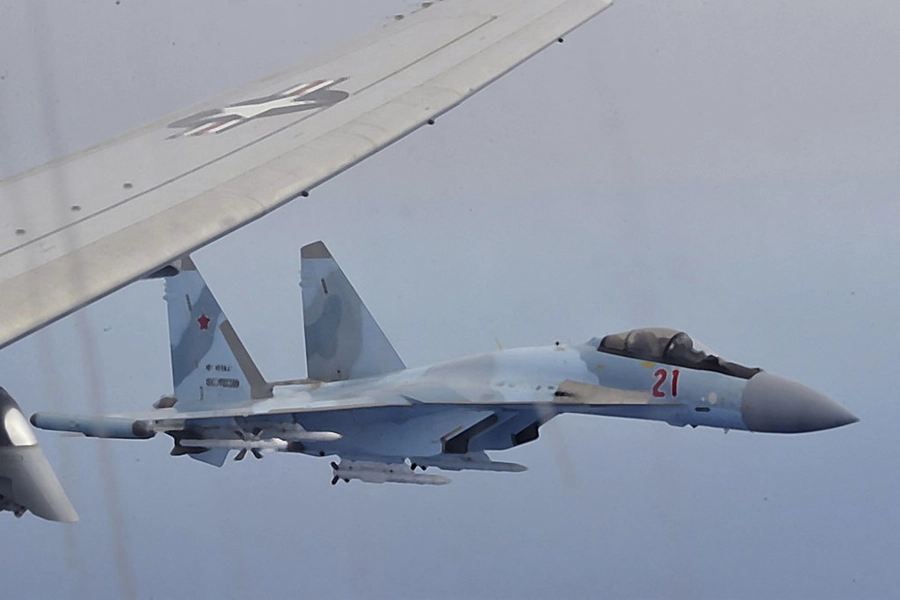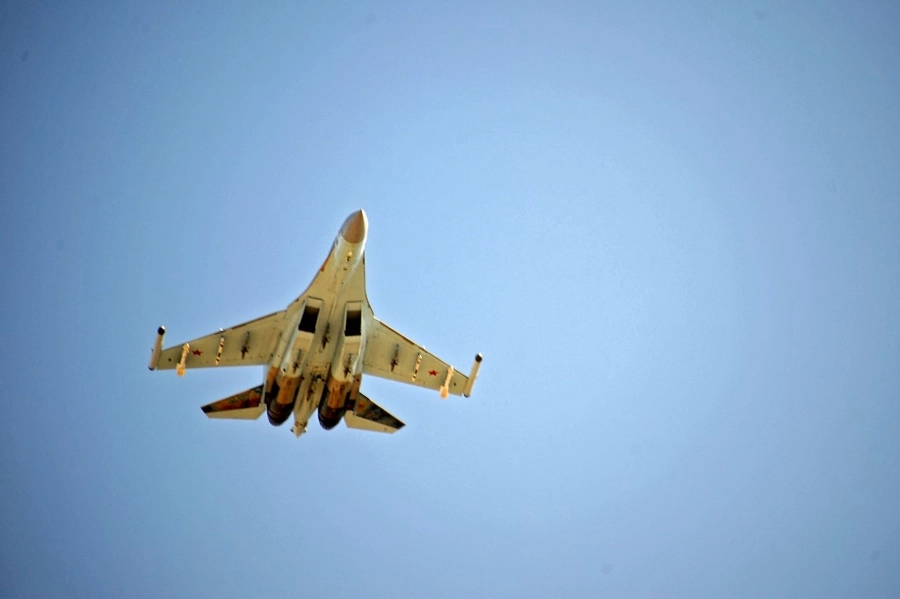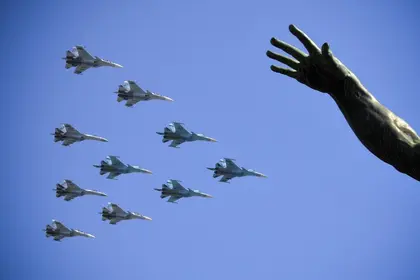Russia’s Sukhoi Su-35 multirole fighters are currently the most advanced 4++ generation fighters Russia possesses after the elusive fifth-generation Su-57 stealth fighters (of which only 10-11 units were made with subpar avionics and stealth capabilities).
Russian Su-35s have been sighted over Ukrainian skies. However, it has yet to make a difference on the battlefield, and some analysts believe it is unlikely to make a significant contribution to the Kremlin's war in Ukraine.
JOIN US ON TELEGRAM
Follow our coverage of the war on the @Kyivpost_official.
Overview of the Su-35
The Su-35 (NATO codename “Flanker-E”) was developed in the Soviet Union in the late 1980s based on the Su-27 (NATO codename “Flanker”) air superiority fighters.
Initially designated as Su-27M, the Su-35 is a super maneuverable fighter aircraft like its predecessor and is fitted with a multifunction radar to give it multirole capabilities to strike air and ground targets, as well as thrust-vectoring engines to further improve its maneuverability, replacing the canards sported on the Su-27Ms.
As a modernized variant of the Su-27 fighter jet, it also came with a better radar and reduced radar signature through the use of composite materials. Some sources also claimed that it came with the S-107 data link system, which would allow tactical data sharing between different military assets – a tool utilized by Western forces for decades.
The jets were delivered to the Russian Air Force (Russian Aerospace Forces) at the beginning of 2014, marking the beginning of its official service. It is currently being produced by the United Aircraft Corporation (UAC), which owns the Sukhoi design bureau.

Trump’s Russia Plan – Will It Work? NATO, Putin & US Strategy Explained
Ukraine does not operate any Su-35 fighters.

Drawbacks
Despite being a 4++ generation aircraft, its performance is still lacking compared to its Western counterparts.
The Su-35 aircraft sported the Irbis-E X-waveband radar that uses passive electronically scanned array (PESA) antennas, which is less advanced compared to the active electronically scanned array (AESA) modules found on the US F-16 fighters that could actively track a larger number of targets at once.
Some analysts also questioned the claimed 350 km radar range of the jet since it only applies to cue search with a narrow field of view (FoV), where in reality it is closer to 200 km.
With Kyiv receiving F-16 fighters from its Western allies as early as 2024, Russia's air capabilities in Ukraine might be further hindered.
Sightings in Ukraine
Russia has used the Su-35s in Ukraine in air-to-air combat, and there are videos circulating on the internet of the supposed downing of Ukrainian jets.
A video has shown a heads-up display (HUD) view from the cockpit where it launched a few missiles against potentially two targets simultaneously.
It was also reported that a Flanker-E was used to engage a Ukrainian Naval Forces Mi-14 helicopter, killing Colonel Ihor Bedzai.
According to Ukrainian Air Force intelligence, the jets were also used to launch glider bombs against front-line positions.
To date, it is known that Russia has lost at least four Su-35s in the ongoing war.
Ukrainian forces shot down one in April 2022 and another in July the same year. In May 2023, Russia lost one unit when it crashed in the Bryansk region bordering Ukraine during a sortie.
In September, another was reportedly shot down by Russian air defense systems using S-300 missiles during a friendly-fire incident.
Foreign Exports
Russia has sold 24 Flanker-Es to China and reached a deal with Iran recently.
The new deal saw Iran's first acquisition of fighter jets since the 1990s, and it includes a number of Flanker-Es, Mi-28 attack helicopters and Yak-130 jet trainers.
The Iranian Air Force (Islamic Republic of Iran Air Force, IRIAF) has long been relying on a number of aging Western fighter aircraft it acquired prior to the revolution, which have been increasingly difficult to maintain.
The last acquisition took place in the 1990s when it purchased MiG-29 fighters from Russia.

While Iran boasts a formidable missile force in the region, its domestic aviation sector remains lacking compared to others.
The new purchase came amidst the deepening ties between Tehran and Moscow, with Tehran supplying a number of Shahed “kamikaze” drones used against Ukrainian civilian infrastructure.
While some nations have expressed interest in the fighter jet, lack of advanced avionics and potential sanctions have deterred many from finalizing the deal with Russia.
You can also highlight the text and press Ctrl + Enter










